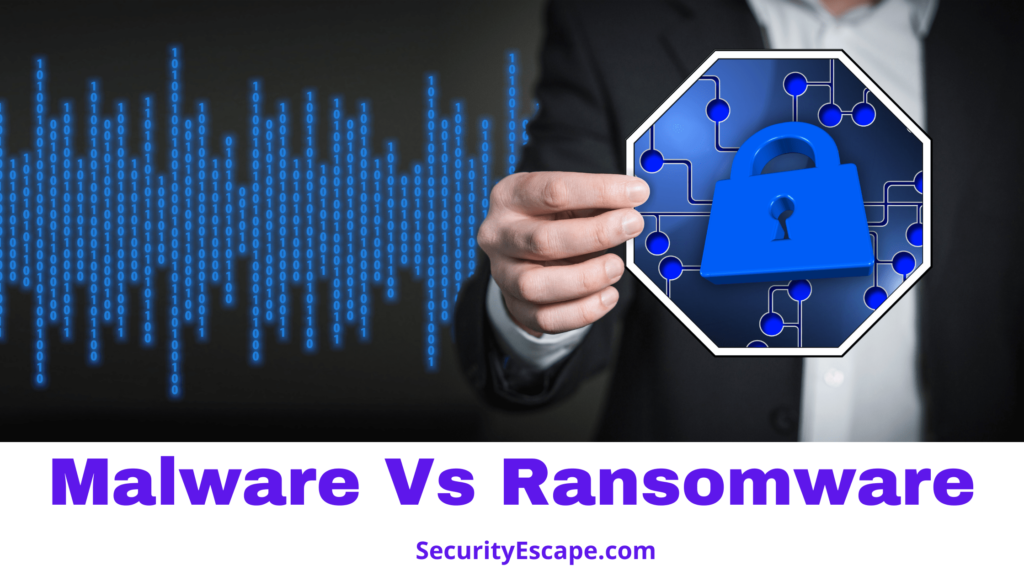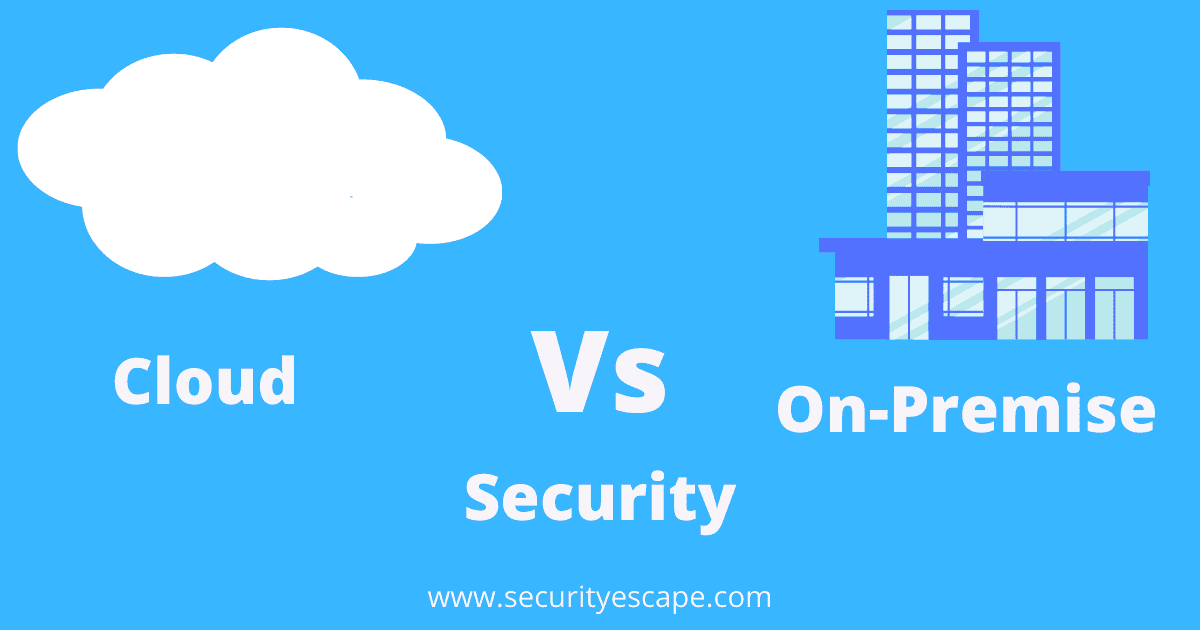
I am sure you must have heard of a Ransomware attack. It is a type of cyber-attack which is carried out by the attacker with the intent to gain financial benefit from the victim in the form of Cryptocurrency. Although sometimes people tend to get confused between malware and ransomware and then they hit this search query on google “Are malware and ransomware the same thing?”
So, if you are one of them, you have a valid concern regarding these two terms, and therefore to clear out your confusion I will be throwing some light on the topic and provide you with an appropriate answer to this question.
So, don’t stress yourself and jump right into the discussion.
Contents
Are Malware and Ransomware the Same Thing?
Malware and ransomware are not the same things and have two different purposes to serve. Actually, ransomware is a type of malware that is launched to gain finance in the form of Bitcoin or other cryptocurrency.
So, for your clarity, I will be first jotting down the definitions for both and then providing you with general differences that make both of them stand out as individuals.
What is Malware?
To define it in simple terms, malware is a type of cyber-attack that is carried out by the attacker, with the help of any malicious software, that only brings harm to the computer.
It is that type of cyber-attack that can steal a user’s data, corrupt it, delete files, or add software without consent. Basically, it is a parent category and has different types of malware attacks like; trojan, spyware, ransomware, viruses, rootkit, adware etcetera, and for more clarity, I will be explaining each of the malware briefly.
- Trojan:
The trojan is a type of malicious software that acts exactly like a legitimate one but can take control of your entire computer system in a few minutes. It usually tricks the users to open the file by camouflaging itself as a verified one and then capturing the system.
It is designed with the intent to disrupt, steal, damage, or do some general harm to your network or data.
- Crypto jacking:
It is another type of malware attack where the attacker tries to gain unauthorized control over a victim’s computer in order to mine Cryptocurrency. It can be either done by injecting a JavaScript code into the website or via Phishing.
Usually, programs called “Coin Miners” are used to mine “Cryptocurrency.” It may seem harmless as it is only using the victim’s computer as a power source to mine Cryptocurrency, but it is illegal as it is done without the consent of the victim.
- Virus:
It is a type of malware designed to spread from one computer to another and corrupt files and applications one by one. They are executed in the form of small codes that target the victim’s computer at a given point.
Some viruses work on the victims’ computer by infecting a word or excel file and are known as “Macro Virus.” Once a computer is infected it can also hop to the next one if any hard drive or pen drive is shared between the affected and non-affected device.
- Adware:
Adware is a kind of malware attack executed by hijacking your browser and then displaying ads on your browser unwantedly so that the attacker can earn his part of the revenue.
It is usually bundled up with legitimate applications, and when a user tries to install these types of applications, it hijacks the browser and starts displaying ads.
- Spyware:
This is a kind of malware that allows the attacker to spy on your every activity without your permission. It is generally executed to collect user information and send that data to a third party for commercial purposes.
It can cost your privacy if you are affected by this malware, and can also slow down your computer and network. Pegasus is the best example of Spyware software.
- Rootkits:
A type of malware that is designed to give access to the unauthorized area of the computer. Although most rootkits affect the software and operating systems, some of them can also cause severe damage to your hardware and firmware.
Therefore, once it gets installed into the victim’s computer, it gives unauthorized access to the attackers to steal your data and financial information, install malware, or use the computer as a part of a botnet to circulate spam and participate in DDoS attacks.
- Worms:
It is a type of malware that replicates itself and spreads to other systems. Usually, it uses a computer network to infect other computers, relying on the security failures of the target computer to get access. It will use this machine as a host to affect the other computers.
- Spambots:
Spambots are a type of malicious software created to perform repetitive tasks. It falls into the malware category when it is used to direct web traffic so that an attacker can easily execute a DDoS attack or spread spam.
What is Ransomware?
Ransomware is a kind of malware attack carried out by the attacker to gain financial benefits. It is usually carried out with the help of phishing or when a user clicks a suspicious link or attachment. You can say it as a child to malware category, and therefore all ransomware can be malware, but all malware can’t be ransomware.
During this attack, an attacker encrypts all your personal files and system and demands a ransom (as the name suggests) in exchange for those encrypted files.
Many a time they camouflage themselves as a government authority or agency faking the reason as “blocked for security purposes”.
The stages of ransomware attack include; escalating privileges to gain admin account or domain permission, secondly executing files, thirdly exfiltrating data, and then finally executing ransomware to demand a ransom payment.
How can I Differentiate Malware from Ransomware?
So, if any day you are affected by Malware or Ransomware, you can easily differentiate by applying the following filters:
| Filters | Malware | Ransomware |
| Definition: | Malware is a type of malicious code or file designed by attackers to harm users’ personal computers and networks. | Malware consists of different types of malicious software including trojans, viruses, spyware, adware and even ransomware. |
| Types: | Malware consists of different types of malicious software including trojans, viruses, spyware, adware, and even ransomware. | Ransomware consists of; Bad Rabbit, Cryptolocker, GoldenEye, Jigsaw, Locky, Maze, NotPetya, Petya, Ryuk, and Wannacry. |
| Delivery agents: | Malware is usually delivered with the help of emails, software installations, USB or hard drives, and via the internet. | Ransomware is generally delivered via phishing email attachments or suspicious links. |
| Removal process: | Malware can cause system errors, control data resources, destroy the entire system, and even slow down performance. | Ransomware is a type of malware that is carried out by attackers to gain access to the victim’s computer, encrypt their important data, and then ask for ransom if they want their files decrypted. |
| Destruction level: | Malware can cause system error, control data resources, destroy the entire system, and even slow down performance. | Ransomware can affect the user data at a very high level but provides a profitable financial deal to the attacker by getting paid to unlock the encrypted files. |
Final Remarks:
Due to this fast-growing internet community, a person can easily access anything on his computer or mobile phone in just a few seconds. Even some businesses run their businesses online, but it is not safe. At every point of this online community, there is a professional hacker who is more than ready to make your online experience vulnerable.
Therefore, there occurs a need to know the difference between malware and ransomware so that you can take appropriate measures to eliminate it and keep your PC safe. You can also easily recover the files encrypted by ransomware if you want to avoid paying ransom to the attackers.
Thus, to conclude, this was my insight on the topic “Are malware and ransomware the same thing?” Hopefully, it has helped you clear your doubts about the difference between malware and ransomware.
Similarly, if you tend to get confused between malware and virus here’s what differentiates them.


